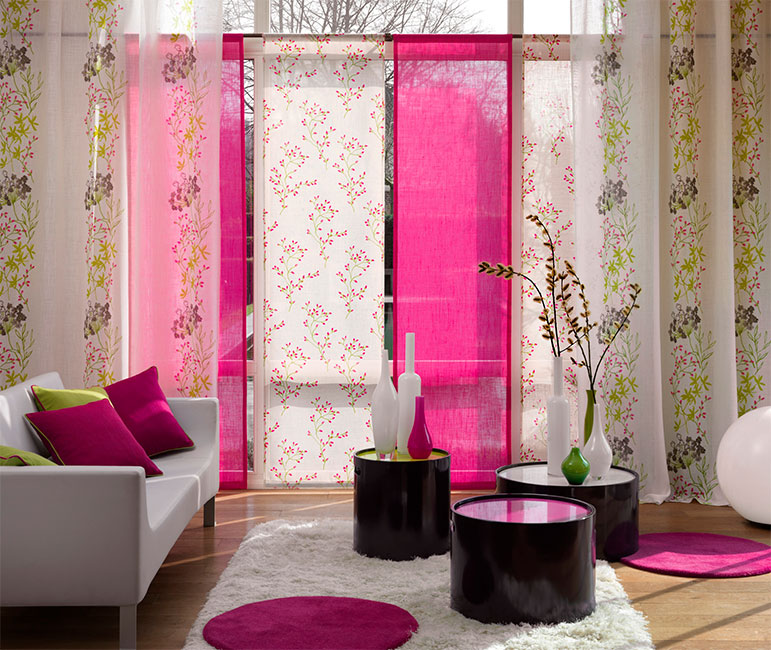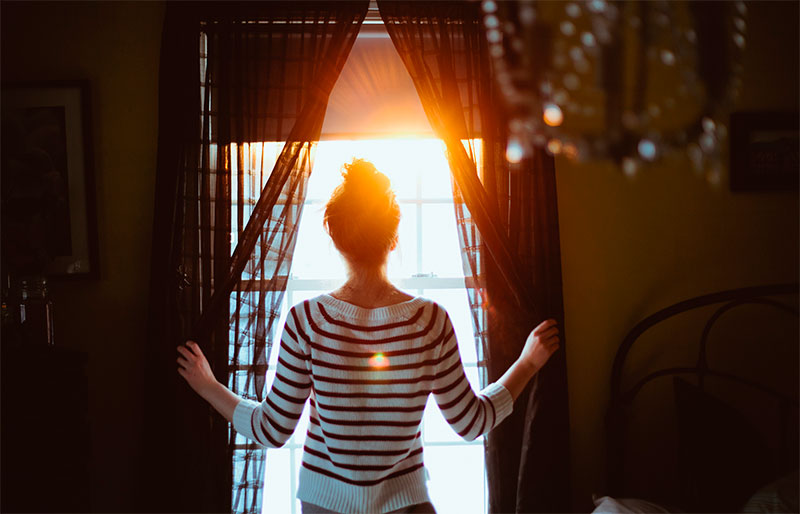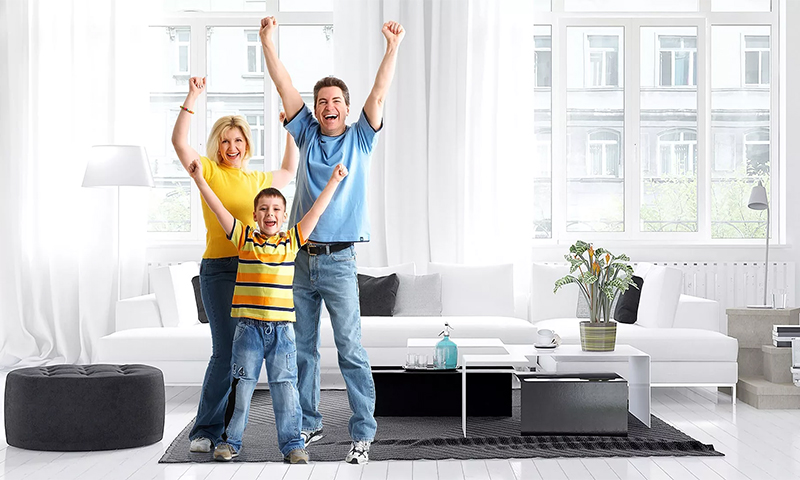Previously, curtains served as protection against wind and sun, that is, they carried a purely practical value. Today everything has changed - they have become the most important part of the whole interior. Without curtains, the room looks empty, poor and uncomfortable. And with correctly chosen curtains the room is transformed beyond recognition. At the same time the curtains are able to adjust the space. For example, to remove the light opening or bring it closer, to make the ceilings higher or lower, to expand or narrow the room visually. In our today's article we will consider the most significant characteristics and parameters of curtains, which should be noted.

Content:
The best manufacturers of curtains
In the domestic market there are so many proposals for the sale and sewing curtains that absolutely anyone, even the most picky, will be able to choose a suitable option. Among the companies producing fabrics and ready-made curtains, there are no obvious leaders who would be heard by consumers. Often, most people prefer to buy the necessary material separately in order to subsequently order a piece of cloth in the studio of the desired style.
But still fashion trends are not taken from nowhere. Their legislators always act world-famous designers.
For those who do not want to delve into the article, we have prepared a list of the most popular manufacturers:
1. Designers guild
2. Watts
3. Byron & byron
4. Casa Valentina
5. Hope and Phillips
All listed brands have the widest range of collections of curtain fabrics. Various price categories, colors, materials allow you to find solutions for the most unusual and extraordinary interiors. If you are looking for a specific model, then we suggest moving to our rating of the best curtains.
Types of curtains
Classic

Two fabric cloths that are combined with each other. The first is hung up tulle, made of light, translucent materials, and the second - curtains, made already from the more dense and heavy versions of the fabric. During the daytime hours, the curtains are pulled back to the sides; they decorate the opening with two vertical lines on the sides. At night, they shift, protecting the room from prying eyes and the light of street lamps.
Advantages:
- large selection of mounting options
- comfort and elegance due to draping folds,
- the ability to use different materials
- fit different styles.
Disadvantages:
- save dust
- inappropriate look in the kitchen.
Roman

Smooth fabric canvases, usually two of them, rising with the help of a special mechanism. The window is decorated with horizontal stripes, with folds formed in the process of lifting, which are beautifully superimposed on each other. In expensive versions, the entire curtain in this way is assembled, while in budgetary options, only the bottom is assembled.
Advantages:
- functional,
- easy to operate and maintain
- suitable for small spaces
- comfortable in the nursery,
- do not interfere with the arrangement of furniture close to the window.
Disadvantages:
- in large rooms look inharmonious,
- not combined with all interiors.
Rolled

Embedded directly into each light opening. Fabric cloth, with weighting agent at the bottom, is wound on a shaft, which is located in the box. Along the perimeter of the window guides are attached. With the help of a convenient mechanism (chains) such curtains fall to the desired level, thereby adjusting the level of illumination. Can be made of materials that allow you to completely block the flow of light.
Advantages:
- built into the opening
- regulate blackout
- can completely block the flow of light.
Disadvantages:
- expensive
- look ascetic.
Pleated

Very similar to the blinds, but made of a fabric that is stretched over the crossbars. This adds warmth and comfort to curtains. Pleated woven fabric is fixed on the profile that rises with the help of an electric drive or cord, collecting the curtain in tight folds. When folded, the pleats are almost invisible on the window.
Advantages:
- gently diffuse the light
- fabrics do not fade in the sun,
- require a minimum of care.
Disadvantages:
- not suitable for spacious rooms.
In the style of "cafe"

The fabric cloth is fixed on the rod-eaves, located in the middle of the window. Thus the room is hidden from prying eyes, but the stream of light freely penetrates there. This is an ideal option for a veranda, balcony, kitchen or bathroom.
Advantages:
- practicality and functionality
- easy to clean
- low cost
Disadvantages:
- suitable only for country style or Provence.
Austrian

Most often made of light and translucent materials. Differ in lush folds that occur during tightening. The control mechanism is similar to that used in Roman blinds. The curtains drawn down are straight, only soft folds remain below, called puffs.
Advantages:
- give the room airiness,
- combine practicality and showiness
- easy to manage.
Disadvantages:
- not suitable for kitchens
- may look slightly pompous.
French

Similar to the Austrian, but have a greater number of horizontal folds. Consist of several sections, where even in unassembled form there are magnificent assemblies. Lifting design leads the canvas up, where the festoons come at each other, creating an airy and solemn effect.
Advantages:
- fit well into tall windows
- easy control mechanism
- create a ceremonial look.
Disadvantages:
- not suitable for every interior,
- look bad in small rooms.
Japanese

Such curtains are also called panel or screen. They are orientally concise, somewhat reminiscent of the screen. Several even fabric cloths in the form of rectangles are hung on a multi-layer cornice. Made most often from natural fabrics (linen, cotton, etc.). From the bottom and top, the curtains are fitted with stiffener inserts, allowing them not to fold when moving. Spread over one or two sides.
Advantages:
- practical and functional
- easy to clean
- can be used in doorways and for zoning.
Disadvantages:
- Only suitable for minimalist interiors.
Curtain selection options

Style
First of all it is necessary to correlate the selected curtains with the interior of the room. For rooms in the Empire style, the Renaissance and the classics, dense curtain fabrics decorated with velvety padding, drapery, ornament or monograms are perfect. Victorian style requires luxurious heavy curtains that literally lie on the floor. Country and Provence, on the contrary, will be harmoniously combined with natural fabrics, which are simple both in texture and in print. Oriental style is distinguished by the importance of individual parts. Curtains better to choose either bright, contrasting, or soothing shades. In the style of loft and hi-tech, the curtains will fit perfectly without unnecessary details, pretentiousness and pomp. It should be simple, sometimes even coarse materials, combined with brick, glass, metal, wood.
Colour
When deciding on a color, remember the basic design rule: curtains should be either lighter or darker than wallpaper. In some cases, the color affects the transmission of light, in some not. Dark curtains are not suitable for small rooms, but light cold shades, on the contrary, will expand the space and visually alienate the window opening. Warm colors will warm and give comfort, choose this option for the room, which is located on the shady side. For offices, bedrooms and children it is better to prefer calm and neutral colors, not irritating the eyes. In the living room you can choose different options, as long as there is harmony of style.
Sunshade protection
Curtains can only slightly diffuse the light or create twilight, and some are able to completely isolate the room from the sun's rays.When choosing, consider the location of the windows. If they go to the sunny side, then it would be better to choose dense curtains capable of blocking the light by fifty percent or more. If the room is in the shade most of the time, then stop looking at the translucent light models.
Mount
1. Band
The upper part is draped with a ribbon, due to which frequent vertical folds are formed. Curtains require a lot of fabric, one and a half or two times the size of the opening.
2. Kuliska
From above the curtain has a tunnel in which the curtain is passed. When moving the canvas makes no noise. Suitable only for straight curtains.
3. Grommets
The upper part of the curtain is already fitted with plastic or metal rings fixed into the fabric into which the tube is inserted. Form uniform folds. Moves around the curtain with sound.
4. Hinges
Cloth loops sewn on top. This is another mounting option for straight web. Move silently.
5. Rings
Unlike the grommets, they are fastened not inside, but outside. The curtain is suspended on them with the help of hooks. Fits for straight and folded curtains.
6. Strings
They look like loops, but the fabric is not sewn, but tied, forming beautiful knots or bows. Suitable for light fabrics and romantic interiors.
Which curtains to choose

1. Most styles fit classic curtains.
2. For greater solemnity, it is better to choose Austrian or French.
3. For kitchens, baths, porches and dining rooms are well suited curtains in the style of "cafe".
4. Roll options fit perfectly in rooms with loft style and high-tech.
5. In the bedrooms and children, especially small, choose Roman and pleated blinds.
6. Japanese curtains will be in harmony with Oriental style and minimalism.
7. For dark rooms, prefer warm and warming shades of curtains, and for rooms facing the sunny side - cold.
8. Vertical stripes are able to visually lengthen the window, and diagonal - to expand. Take care also that the light permeability is less where there is more sun flow and vice versa.
9. Heavy and dense fabrics need a strong and reliable fastening (grommets, rings, drawstring, braid), and light and airy can safely rest on the fabric loops and ties.
How much are the curtains

1. Ready-made curtains will cost less, from about 1,500 to 5 thousand rubles, but they may not be suitable for your window opening. Sewing to order will cost significantly more, depending on the type of curtains, fabric and fastening, the approximate amount is from 5 to 15 thousand rubles.
2. Direct options are more cost-effective, as less fabric is required. They are in the range of 5-10 thousand rubles.
3. The more folds and draperies on the curtains, they are much higher in cost. The classic version of the curtains on the band can go to 15-30 thousand rubles.
4. Rolled curtains with maximum protection from light are sold for approximately 2,500 r apiece. Models with high passability will cost less.
5. Roman blinds and pleats cost an average of 3 to 7 thousand rubles.
It will be interesting to friends too







